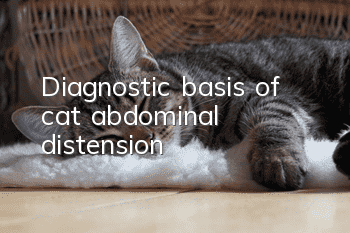Diagnostic basis of cat abdominal distension

The basis for diagnosis of feline abdominal transmission is:
1. Diagnosis of feline abdominal transmission is generally confirmed by doing coronavirus PCR, and symptoms can also be used to assist in identification.
2. The characteristic symptoms of feline infectious peritonitis mainly include sudden increase in abdominal circumference, fluctuating sensation when touched, and body temperature rising and falling.
3. To check for feline infectious peritonitis, you must first determine whether the coronavirus has infected the cat, and then caused the mutation of the coronavirus. To confirm the diagnosis, you must first determine whether the nature of the ascites meets the standards for feline infectious peritonitis, and also conduct blood biochemical tests and routine blood tests.
The symptoms of feline abdominal transmission are:
1. Usually when a cat suffers from wet feline abdominal transmission, it will initially appear depressed, loss of appetite, weight loss, Symptoms such as elevated body temperature. After 7 to 42 days of illness, the abdomen begins to gradually expand, with fluctuations and no pain on palpation. At the same time, the sick cat is accompanied by symptoms such as anemia, weight loss, rapid breathing, and physical weakness.
2. Some cats may also develop pleural exudate, pericardial effusion, and obvious jaundice in the middle and late stages. In addition, male cats may have an enlarged scrotum.
3. The main symptoms of dry cat epilepsy are eye diseases such as iritis and edema in mesenteric lymph nodes. Some individuals may have neurological symptoms, such as paralysis, epilepsy and peripheral neuritis. occur.
- Why do cats look for people as soon as they wake up?
- Why does a cat have no energy and keeps sleeping?
- Do cats cry? Do cats shed tears?
- Ragdoll cat personality traits
- What colors do cats like?
- Causes and solutions for bedwetting in kittens
- The most obvious sign that a cat is pregnant at 25 days
- How much does a white cat with orange eyes cost? Is it easy to raise? Pictures of white cats with orange eyes | price | introduction
- What are the symptoms of British short estrus?
- Cat has diarrhea in winter



